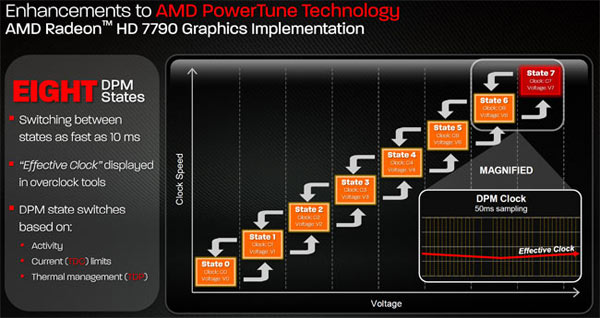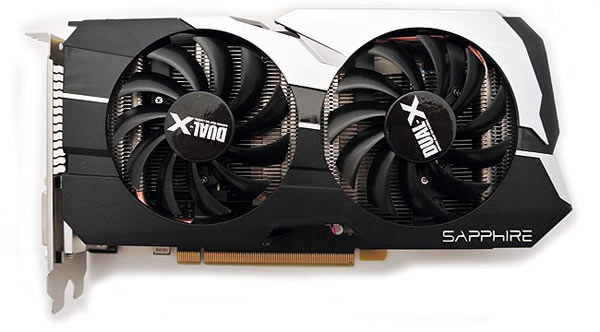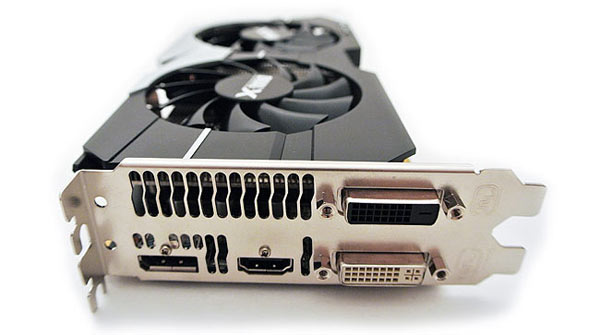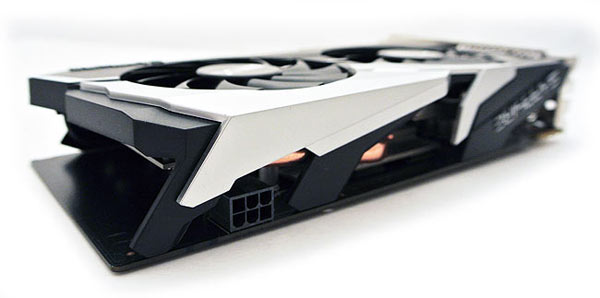AMD Radeon HD 7790 Review: Graphics Core Next At $150
After a long and lonely reign, Nvidia's GeForce GTX 650 Ti is finally being challenged at the $150 price point. Does AMD's Bonaire-based Radeon HD 7790 offer enough performance to put up a fight, or is its familiar GCN architecture too little, too late?
Meet AMD's Radeon HD 7790, Based On Bonaire
It feels a little strange introducing AMD's Radeon HD 7790 today. The Pitcairn-based cards were launched more than a year ago (AMD Radeon HD 7870 And 7850 Review: Pitcairn Gets Benchmarked), and we figured they'd be the last additions to the 7000-series, particularly when so much time passed without an official Radeon HD 7990. Instead, we were hoping to see the company's next-gen Radeon HD 8000 family. It looks like that isn't going to happen, though (at least, not based on any sort of new technology; AMD appears happy repackaging Graphics Core Next as the 8000-series and handing it off to OEMs for now).
That's not to say that the Radeon HD 7790 isn't a good idea. Frankly, we're surprised it took AMD this long to give us a product in between the $120 Radeon HD 7770 and $180 Radeon HD 7850 1 GB. The $60 spread between those two parts opened AMD up to a surgical strike from Nvidia, which dominated the $150 price point with its GeForce GTX 650 Ti. Moreover, AMD is suggesting that we shouldn't expect the Radeon HD 7850 1 GB to hang around much longer...at least at its current price.
The stage is consequently set for something new; an answer to the GeForce GTX 650 Ti, if you will. Meet AMD's Bonaire GPU, on which the Radeon HD 7790 is based:

When we first started hearing about it, we thought the Radeon HD 7790 might sport a cut-back Pitcairn graphics processor, just like the engineering sample that our German team acquired back in May of last year. But Bonaire is all-new, making it the fourth Graphics Core Next-based chip from AMD. Sporting 2.08 billion transistors and a 160 square-millimeter die, it is likewise manufactured on TSMC’s 28 nm node, similar to the rest of AMD's Radeon HD 7000 family. It's actually 52 square millimeters smaller than Pitcairn, and 37 square millimeters larger than the Cape Verde silicon driving the Radeon HD 7700s.
Bonaire hosts 14 compute units (CUs), each of which contains four vector units (VUs). The VUs have 16 Stream processors and one texture unit. All told, Bonaire hosts 896 shaders and 56 texture units. The chip's back-end is composed of four render partitions, each capable of four full-color raster operations per clock. AMD calls this 16 ROPs. Two 64-bit memory controllers yield an aggregate 128-bit memory bus.

From an architectural standpoint, Bonaire features the same GCN architecture as AMD's current line-up. The company does make some tweaks to its power delivery, though, employing eight distinct states instead of four. This added granularity should help the GPU operate at the right voltage and clock rate for each workload. AMD claims this also facilitates higher peak frequencies. Transitions between states are apparently as fast as 10 ms, or about an order of magnitude quicker than changes to Nvidia's GPU Boost technology, and based on load, current limits, or the GPU's thermal ceiling.
Ultimately, the mechanism underlying AMD's updated PowerTune technology (which also surfaces in the Richland-based APUs) is less important than its actual impact on power and performance. In one workload we ran (Crysis 3), we saw the Radeon HD 7790 use a few watts less than a Cape Verde-based card. However, it's also possible to go the other way, yielding more performance at higher power.
Get Tom's Hardware's best news and in-depth reviews, straight to your inbox.
How do the card's specs look compared to the competition?
| Header Cell - Column 0 | Radeon HD 7790 | GeForce GTX 650 Ti | Radeon HD 7770 | Radeon HD 7850 | Radeon HD 6870 |
|---|---|---|---|---|---|
| Shader Cores | 896 | 768 | 640 | 1024 | 1,120 |
| Texture Units | 56 | 64 | 40 | 64 | 56 |
| Color ROPs | 16 | 16 | 16 | 32 | 32 |
| Fabrication process | 28 nm | 28 nm | 28 nm | 28 nm | 40 nm |
| Core/Boost Clock | 1 GHz | 925 MHz | 1 GHz | 860 MHz | 900 |
| Memory Clock | 1,500 MHz | 1,350 MHz | 1,125 MHz | 1,200 MHz | 1,050 MHz |
| Memory Bus | 128-bit | 128-bit | 128-bit | 256-bit | 256-bit |
| Memory Bandwidth | 96.0 GB/s | 86.4 GB/s | 72.0 GB/s | 153.6 GB/s | 134.4 GB/s |
| Graphics RAM | 1 or 2 GB GDDR5 | 1 or 2 GB GDDR5 | 1 GB GDDR5 | 1 or 2 GB GDDR5 | 1 GB GDDR5 |
| Power Connectors | 1 x 6-pin | 1 x 6-pin | 1 x 6-pin | 1 x 6-pin | 2 x 6-pin |
| Maximum TDP | 85 W | 110 W | 80 W | 130 W | 151 W |
| Price | $150 (MSRP) | $140-$180 (Newegg) | $110-$160 (Newegg) | $180-$220 (Newegg) | (End Of Life) |
Realistically, the Radeon HD 7790 replaces AMD's old Radeon HD 6870, a card that offered significantly more memory bandwidth, but less compute potential as a result of its now-two-generation-old VLIW5 architecture. Nvidia's GeForce GTX 650 Ti also looks like a close match, delivering similar performance specifications, though the 7790's TDP is 25 W lower.
Like the Pitcairn-based Radeon HD 7800-series cards (and the Cayman-based cards before those), Bonaire's front-end employs dual geometry and tessellation engines, facilitating two primitives per clock. The Cape Verde GPU can only do 1 primitive/clock. In theory, geometry-heavy games should consequently favor the Radeon HD 7790 over the 7770 or 7750. All the while, Radeon HD 7790 is an 85 W part. That's only 5 W more than the Radeon HD 7770.
Sapphire HD 7790 Dual-X

AMD didn't ship out reference designs for this launch, instead opting to have partners send out their own boards. Sapphire shipped us its HD 7790 Dual-X as an example of what the Radeon HD 7790 can do. Measuring 8.5" x 4.5" x 1.5" for the PCB and fan, it's about 1.5" shorter than the reference Radeon HD 7870.

Sapphire's card includes 1 GB of RAM, though we'd be surprised if 2 GB models don't start showing up at some point, too. The reference memory frequency is 1,500 MHz (6 GT/s, effectively), but Sapphire overclocks an additional 100 MHz to help overcome the base specification's more limited bandwidth. The card's graphics core is also overclocked to 1,075 MHz, a 75 MHz boost. AMD tells us that Radeon HD 7790 cards will start at $150 but we do not know how much more this tuned version will cost. No doubt, it'll be more than entry-level models running at reference frequencies. (Update: Sapphire's card should sell for $160, $10 more than reference-class 7790s, according to company representatives).
The back of Sapphire's board is interesting in that it includes quite a bit of unused space.

The Dual-X comes with dual- and single-link DVI outputs as, well as full-sized HDMI and DisplayPort connectors. Bonaire actually supports as many as six displays in Eyefinity; however, this is going to require unique output configurations and DisplayPort MST hubs. In Sapphire's case, the HD 7790 Dual-X can accommodate up to three displays.

Given its 85 W thermal ceiling, AMD needed to add one six-pin auxiliary power connector to complement a 16-lane slot's 75 W. The Dual-X cooler comes equipped with two 75 mm axial fans and two heat pipes. There's a single CrossFire connector on top of the card, indicating you can run two 7790s in tandem, but three- and four-way configurations are not possible.

Sapphire's bundle includes a four-to-six-pin power adapter. We're not fans of these, but considering that the Radeon HD 7790's TDP is just 10 W more than PCI Express' electromechanical specification, we aren't as concerned as we might have otherwise been. You'll also find an HDMI cable, a DVI-to-VGA adapter, a CrossFire connector, documentation, and a driver CD in the card's packaging.
Current page: Meet AMD's Radeon HD 7790, Based On Bonaire
Next Page Test Setup And Benchmarks-
johnsonjohnson I thought the HD 7850 1GB is good value at $150 after rebate and 2GB at $180 after rebate.Reply -
mayankleoboy1 Its crazy to see how much performance you can get in $150. The HD7790 performs 90% of the 6870, which menas its almost equal to a HD5870 :O , which was the top chip a few years back.Reply -
Nintendo Maniac 64 Too bad the OpenGL benches weren't implemented before Tom's did that "Gaming on workstation GPUs" article...Reply -
amdfangirl I guess I know what my next GPU will be.Reply
6870 performance in a 85W envelope is amazing.
-
rdc85 It really strong rival for 650Ti....Reply
Glad to see some competition at entry/budget level card..... -
vmem wow, nice job AMD...Reply
and perhaps they finally realized that they make crappy reference coolers at best and just let Sapphire go ahead and ship to Tom's lol. In all honesty, as an AMD exclusive partner, Sapphire should just go ahead and take over reference cooler design for AMD, they make some awesome stuff -
blazorthon amdfangirlI guess I know what my next GPU will be. 85W TDP... basically = to a HD 5870... I can't believe it...I'll get the 2GB and finally be able to play Skyrim 1080p w/high res textures xD.Reply
IDK about it at that point. High-res stuff and all that can eat through poor memory bandwidth cards such as this quite easily. -
vmem amdfangirlI guess I know what my next GPU will be. 85W TDP... basically = to a HD 5870... I can't believe it...I'll get the 2GB and finally be able to play Skyrim 1080p w/high res textures xD.Reply
Honestly, if you put on enough high res mods, even my 7970 barely keeps up... still a gorgeous game tho, and you'll enjoy it just fine with a little tweaking and a 7790 -
blazorthon Well, it seems to not hold up quite to the 90% of a 7850 rumors, but it's at a respectable ~80% of it on average. For $150, that is definitely a great competitor.Reply